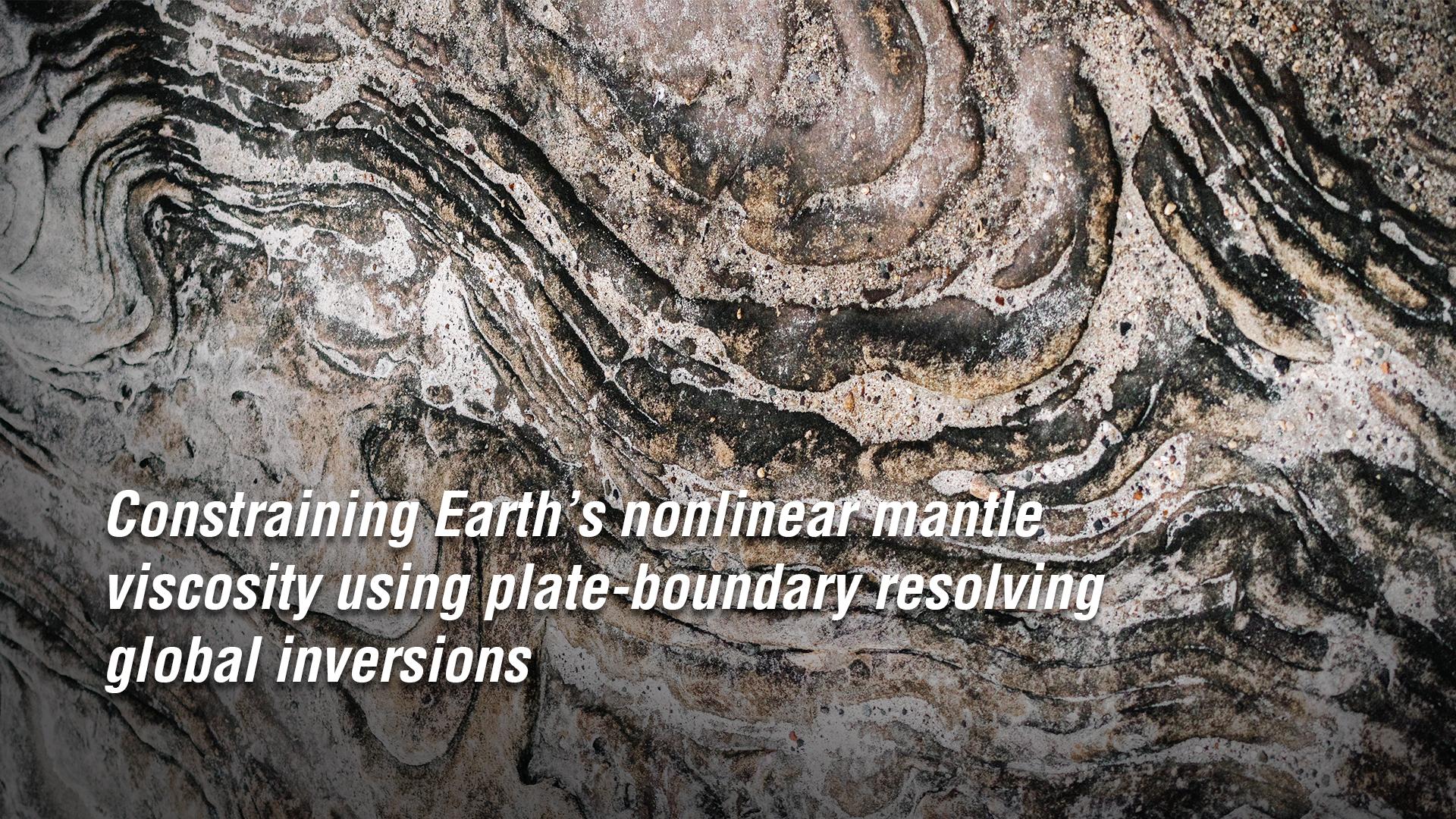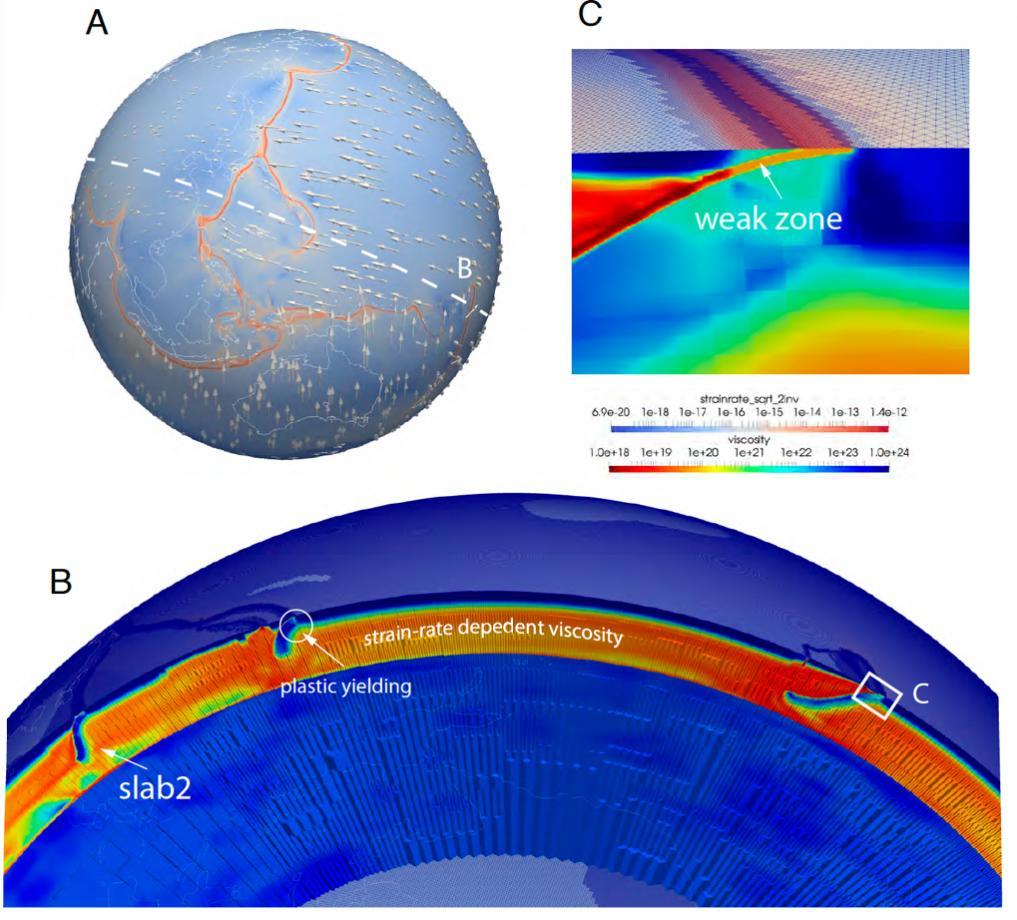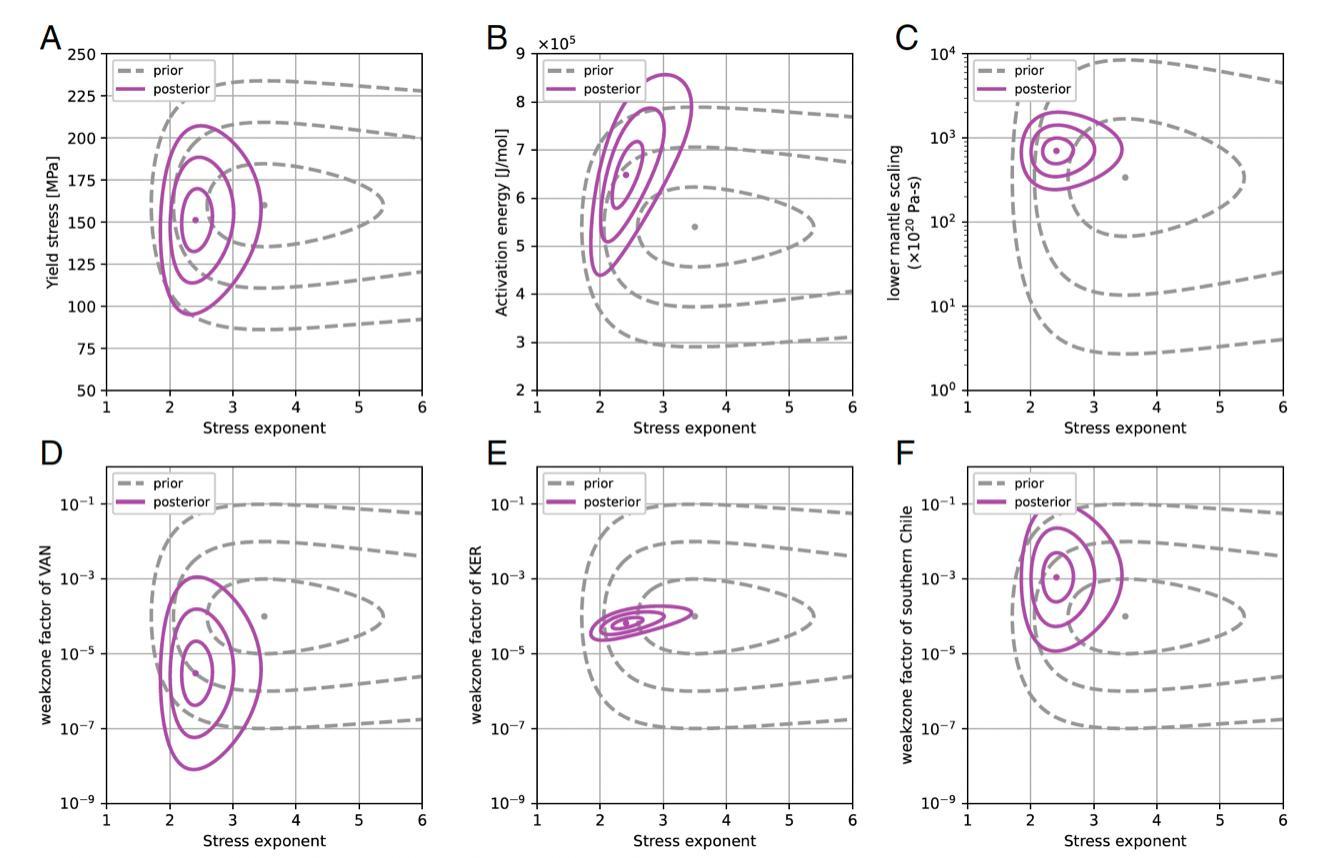Researchers collaborate to constrain non-linear mantle rheology using global adjoint inversion
2024-07-19
Rheology is the study of how materials change shape and flow when force is applied to them. The evolution of the solid Earth is regulated by mantle convection and plate tectonics, which involves complex and non-linear behaviors. Understanding the rheology of the solid Earth relies on experiments, but these experiments often use strain rates several orders of magnitude higher than those that occur naturally, raising questions about the applicability of these findings in real-world geological processes.
Another important method for constraining the rheology of the solid Earth is geophysical inversion, which uses various observations, including how the Earth’s surface rebounds after glaciers melt, how the ground shifts after earthquakes, how tectonic plates move, and changes in the Earth’s gravity field. These observations help scientists infer how the Earth’s outer shell (lithosphere) and the mantle underneath it behaves.

Associate Professor Jiashun Hu from the Department of Earth and Space Sciences at the Southern University of Science and Technology (SUSTech), in collaboration with international researchers, has published a study that uses advanced methods to constrain key parameters controlling mantle viscosity. This research combines the adjoint method and Bayesian inversion to map out a three-dimensional viscosity structure of the mantle, providing deeper insights into its properties.
Their paper, entitled “Constraining Earth’s nonlinear mantle viscosity using plate-boundary resolving global inversions”, has been published in Proceedings of the National Academy of Sciences (PNAS).
The aforementioned geophysical inversion can provide preliminary insights into the current mantle viscosity. However, whether through formal inversions or forward models to match observations, rheology is usually simplified, generally using Newtonian constitutive relations or even simplified to a one-dimensional viscosity field varying with depth. However, it has long been known that the mechanisms controlling mantle rheology include highly nonlinear dislocation creep, various forms of plastic deformation, and diffusion creep.
The research team aimed to better understand the mantle’s properties by using advanced mathematical methods to constrain the nonlinear behavior and create a detailed, three-dimensional map of its viscosity. In simpler terms, they focused on several key rheological parameters like activation energy, stress exponent, yield stress, and the background viscosities of the upper and lower mantle.
To achieve this, they combined Bayesian inversion and adjoint method with advanced forward modeling in a global framework. Traditional forward methods have struggled with accurately modeling bending plates and megathrust faults at subduction zones. The team overcame these challenges by using adaptive mesh refinement and combining different types of geological data. During the inversion, they used plate motion as a constraint to refine the parameters to be inverted. They started with existing data from laboratory experiments, creating an initial model to guide their calculations. They found the best fit by repeatedly adjusting the model parameters through advanced algorithms that minimize the misfit between the predicted and observed plate motion (Figure 1).

Figure 1. Global model setup. (A) shows the strain rate and plate motion; (B) shows the nonlinear rheological field of the mantle and the adaptive mesh refinement; (C) shows the viscous weak zones at subduction channels.
After about 30 iterations, they determined the final stress exponent to be n=2.43±0.25 (with uncertainty as one standard deviation of the posterior distribution), yield stress σy=151±19 MPa, and upper mantle activation energy Ea=648±70 kJ/mol (Figure 2 A–C). To ensure the reliability of their results, they tested different starting points for their calculations. Even with significantly different initial guesses, the final results were very close, indicating robust findings.

Figure 2. Marginal distribution of rheological parameters. The purple solid line represents the posterior distribution, and the gray dashed line represents the prior distribution.
Their model also provided insights into shear stress in subduction zones, which is important for understanding major earthquakes. This advanced global inversion model, combining leading forward modeling techniques and inversion methods in academia, offers a comprehensive understanding of the mantle’s rheology. It has significant implications for understanding the driving forces of plate motion, the stress-strain rate fields of the Earth’s interior, and the patterns of mantle convection.
Associate Professor Jiashun Hu is the co-first and corresponding author, and SUSTech is the primary affiliated unit. Other members of the research team included Assistant Professor Johann Rudi from Georgia Tech, Professor Michael Gurnis from Caltech, and Professor Georg Stadler from New York University.
This work was supported by the Frontera Supercomputing Center in the USA, the Youth Scientist Project of China’s National Key R&D Program, and the National Natural Science Foundation of China Major Research Plan Integration Project.
Paper link: https://www.pnas.org/doi/epdf/10.1073/pnas.2318706121




